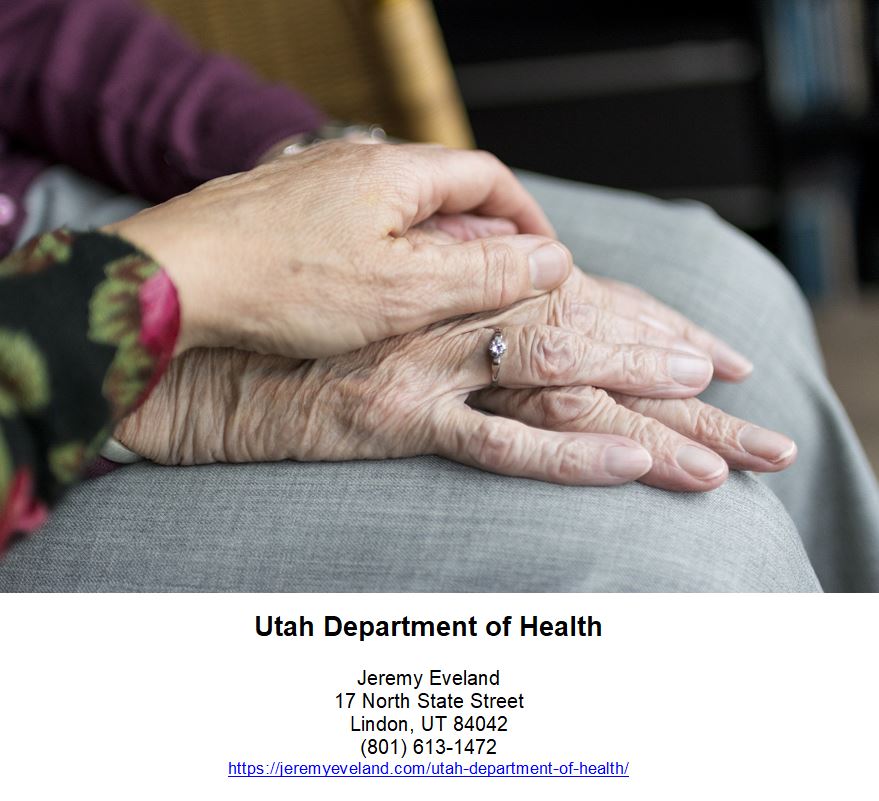In the current global landscape, the COVID-19 pandemic has had far-reaching implications, affecting various sectors and industries worldwide. It should come as no surprise that commercial real estate contracts have been significantly impacted by this unprecedented crisis. From disrupted leasing arrangements to the renegotiation of terms, countless businesses and individuals have found themselves grappling with the legal complexities brought about by the pandemic. In this article, we will explore the multifaceted impact of COVID-19 on commercial real estate contracts, shedding light on the challenges faced by both landlords and tenants alike. Whether you are a property owner seeking guidance or a tenant navigating the uncertain terrain, understanding the legal implications of this exceptional situation is crucial. Contact commercial real estate lawyer Jeremy Eveland for expert advice and a comprehensive consultation tailored to your specific needs.
Force Majeure Clauses and COVID-19
Definition of Force Majeure
Force majeure, a French term meaning “superior force,” refers to a contractual provision that allows parties to be excused from performing their obligations due to unforeseen events or circumstances beyond their control. These events are typically considered acts of God or natural disasters, such as earthquakes, floods, or hurricanes. Force majeure clauses are included in contracts to allocate the risk of unexpected events that could make performance impossible or impracticable.
Applicability of Force Majeure Clauses to COVID-19
The outbreak of the COVID-19 pandemic has posed significant challenges to businesses across the globe, including those in the commercial real estate sector. The question arises whether force majeure clauses can be invoked to excuse performance or delay obligations due to the pandemic. The answer depends on the specific language of the force majeure clause in each contract and the applicable law governing the agreement.
While many force majeure clauses explicitly include terms like “epidemic,” “pandemic,” or “public health emergency,” not all contracts have such specific language. However, the broad language often used in force majeure clauses, such as “acts beyond the control of the parties” or “events that make performance impossible,” may provide some leeway for parties affected by the COVID-19 pandemic to rely on force majeure as a valid defense for non-performance.
Interpretation of Force Majeure Clauses in Relation to Pandemics
When interpreting force majeure clauses in the context of pandemics, courts typically consider the language of the clause, the intent of the parties, and the reasonable expectations of the contracting parties at the time of entering into the agreement. Additionally, courts may also look at whether the party invoking the force majeure clause took reasonable steps to mitigate the impact of the pandemic on their ability to perform their obligations.
The COVID-19 pandemic, being a global and unprecedented event, has led to legal uncertainties surrounding the applicability of force majeure clauses. The interpretation of these clauses will depend on various factors, including the specific wording of the clause, the jurisdiction’s laws, and the unique circumstances of each case.
Impossibility of Performance
Overview of Impossibility of Performance Doctrine
The doctrine of impossibility of performance, also known as supervening impossibility, comes into play when an unforeseen event makes the performance of a contractual obligation fundamentally impossible. It is different from force majeure, as it focuses on the essence of the obligation rather than the parties’ ability to perform.
Under this doctrine, performance is considered impossible if it cannot be achieved by any means or under any circumstances, even with reasonable efforts and expenditure. However, the impossibility must be objective and not due to the fault or negligence of the party claiming it.
COVID-19 and Impossibility of Performance
The COVID-19 pandemic has disrupted supply chains, caused government-mandated shutdowns, and imposed travel restrictions that have significantly impacted businesses’ ability to perform their contractual obligations. In certain cases, the pandemic’s impact may render performance of a contract impossible from an objective standpoint, thereby triggering the doctrine of impossibility.
For example, if a commercial real estate developer is unable to proceed with a construction project due to government-imposed lockdowns and restrictions on non-essential activities, the developer may argue that the performance has become impossible. However, the applicability of the impossibility of performance doctrine will depend on a thorough analysis of the contractual obligations, the specific circumstances, and the governing law.
Causation and Burden of Proof
To successfully invoke the doctrine of impossibility of performance related to COVID-19, it is essential to establish a direct causal link between the pandemic and the inability to perform. The burden of proof lies with the party seeking to excuse performance, requiring them to demonstrate that performance has been rendered truly impossible due to the pandemic’s effects.
Courts will scrutinize the causal relationship between the pandemic and the inability to perform, considering factors such as the timing of the pandemic’s onset, government regulations, and public health guidelines. It is crucial to document and gather evidence supporting the claim of impossibility, such as government orders, travel restrictions, or supply chain disruptions.

Frustration of Purpose
Understanding Frustration of Purpose Doctrine
The frustration of purpose doctrine arises when an unforeseen event occurs that undermines the underlying reason or purpose for entering into a contract. It is often invoked when the performance of a contract becomes possible but renders it pointless or significantly different in nature from what the parties initially intended.
Courts consider whether the intervening event has fundamentally altered the parties’ expectations or the commercial viability of the contract. The party seeking to rely on the frustration of purpose doctrine must demonstrate that the frustrating event was not anticipated or contemplated by the parties at the time of entering into the agreement.
COVID-19 and Frustration of Purpose
The COVID-19 pandemic has affected businesses and industries in ways that were unimaginable when many contracts were drafted. Restrictions, closures, and changes in consumer behavior have disrupted the commercial real estate market and rendered some contracts less meaningful or commercially viable.
For instance, a lease agreement for a retail space that was based on projecting high foot traffic and consumer spending may become frustrated when government-imposed lockdowns or social distancing measures significantly reduce customer visits and sales. In such cases, the frustration of purpose doctrine may offer a potential defense or avenue for renegotiation.
Impact on Lease Agreements
Lease agreements in the commercial real estate sector have been particularly affected by the COVID-19 pandemic. Retail tenants, in particular, have faced significant challenges as many were forced to temporarily close their businesses or experienced a significant decline in customer traffic.
Landlords and tenants may need to consider renegotiating lease terms, such as rent abatement or modifications, to address the challenges posed by the pandemic. The frustration of purpose doctrine can provide a possible legal basis to seek lease modifications or termination if the primary purpose of the lease has been severely undermined by the pandemic.
Material Adverse Change Clauses
Definition and Purpose of Material Adverse Change Clauses
Material Adverse Change (MAC) clauses are contractual provisions that allow parties to terminate or modify a contract if there is a material adverse change in circumstances that affects the value or viability of the agreement. These clauses are typically found in merger and acquisition agreements, loan agreements, and other complex commercial contracts.
The purpose of MAC clauses is to allocate the risk of unforeseen events that could significantly impact the transaction or make the parties’ obligations undesirable or impossible. These clauses provide parties with an exit strategy or an avenue for renegotiation if certain defined events occur, such as a severe economic downturn, regulatory changes, or industry-wide disruptions.
COVID-19 as a Trigger for Material Adverse Change Clauses
The COVID-19 pandemic has resulted in widespread economic upheaval and uncertainty. Many businesses have experienced severe financial losses, operational disruptions, and market volatility. Parties to contracts with MAC clauses are examining whether the pandemic, and its consequences, constitutes a material adverse change that allows them to terminate or modify their agreements.
The determination of whether COVID-19 qualifies as a trigger for MAC clauses depends on the specific language used in the contract, the intent of the parties, and the governing law. Courts will closely examine the wording and interpretation of the clause and consider the extent to which the pandemic’s impact has affected the fundamental value or viability of the agreement.
Enforceability and Drafting Considerations
For parties relying on MAC clauses to terminate or modify contracts due to the impact of COVID-19, enforceability can be a contentious issue. Courts often interpret MAC clauses narrowly and require the event triggering the MAC clause to have a substantial and long-lasting impact on the overall agreement.
When drafting MAC clauses, parties should consider using clear and specific language that encompasses a wide range of events, including pandemics, epidemics, or public emergencies. It is crucial to define the scope and duration of the material adverse change, as well as any specific thresholds or consequences triggered by the occurrence of such an event.

Rent Abatement and Lease Modifications
Temporary Rent Abatement and Lease Modifications
The COVID-19 pandemic has caused financial strain on many businesses, making it challenging for them to meet their rental obligations. In response, landlords and tenants have explored temporary rent abatement or lease modifications to alleviate the financial burden during these unprecedented times.
Rent abatement refers to a temporary reduction or suspension of rent payments, allowing tenants to navigate through periods of financial hardship. Lease modifications involve amending the terms of the lease agreement to provide temporary relief, such as lower rent or adjusted payment schedules.
Negotiating Terms during the Pandemic
Both landlords and tenants have a vested interest in maintaining a positive landlord-tenant relationship during the pandemic. Negotiating mutually beneficial terms can help landlords retain tenants and minimize potential vacancies while assisting tenants in overcoming financial hurdles caused by the crisis.
When entering into negotiations, parties should maintain open lines of communication, express their concerns, and explore creative solutions that strike a fair balance between their respective interests. Landlords may consider offering rent deferrals, abatement periods, or temporary lease modifications to provide relief to tenants. Meanwhile, tenants should provide transparent financial information and propose reasonable alternatives that address their financial hardships while respecting the landlord’s needs.
Implications for Landlords and Tenants
Rent abatement and lease modifications present both challenges and opportunities for landlords and tenants. Landlords may face short-term financial strain due to the reduction or suspension of rental income. However, maintaining a good relationship with tenants can lead to long-term benefits, such as increased tenant loyalty and the potential to attract new tenants in the future.
For tenants, securing temporary rent abatement or lease modifications can significantly impact their ability to weather the financial storm caused by the pandemic. These temporary measures can provide breathing room and allow tenants to stabilize their businesses and continue their operations while adjusting to the changing market conditions.
Insurance Coverage and COVID-19
Business Interruption Insurance
Business interruption insurance is intended to compensate policyholders for income loss and additional expenses incurred when their business operations are disrupted due to covered events. The coverage typically includes situations such as damage from fires, floods, or other physical perils. However, there is ongoing debate and legal uncertainty regarding the applicability of business interruption insurance to losses resulting from the COVID-19 pandemic.
Policyholders who suffer financial losses due to government-mandated closures, supply chain disruptions, or reduced customer demand caused by the pandemic have sought to claim coverage under their business interruption insurance policies. However, insurers have generally argued that viruses or pandemics are excluded from coverage, as they fall under the category of non-physical damages.
Pandemic Exclusions in Insurance Policies
Many insurance policies issued after previous virus outbreaks, such as SARS or MERS, have included specific exclusions for losses caused by pandemics or communicable diseases. These exclusions were intended to limit insurers’ exposure to claims resulting from widespread outbreaks.
Policyholders seeking coverage for COVID-19-related losses face the challenge of interpreting policy language and establishing whether their specific policies contain pandemic exclusions. Insurance coverage disputes related to COVID-19 are likely to involve complex legal analysis and require a thorough review of the policy language and applicable laws.
Coverage Disputes Related to COVID-19
The COVID-19 pandemic has led to a surge in coverage disputes between policyholders and insurers. Courts are currently grappling with the question of whether business interruption insurance policies provide coverage for losses resulting from the pandemic.
The outcome of these disputes will depend on various factors, such as the specific policy language, the applicable law, and the interpretation of policy terms. Courts will examine whether the policy’s language includes coverage for viruses, communicable diseases, or government actions, as well as consider any applicable endorsements, exclusions, or additional coverage provisions.
Policyholders should consult with legal counsel to assess their insurance coverage, review policy language, and determine the best course of action to seek coverage for losses incurred during the COVID-19 pandemic.
Understanding Lease Termination and Renegotiation
Termination Rights under Commercial Leases
Commercial leases typically include provisions that outline the rights and obligations of both landlords and tenants, including termination rights. These termination rights can vary depending on the specific terms negotiated between the parties and the governing law.
Termination rights may arise due to various circumstances, such as breaches of contract, non-payment of rent, or specific events that trigger termination provisions, such as a change in ownership or force majeure events. Understanding the lease’s termination provisions is crucial for both landlords and tenants, as it provides insights into the circumstances under which either party can terminate the lease agreement.
Negotiating Lease Renewals or Modifications
The COVID-19 pandemic has significantly impacted the commercial real estate market, leading many tenants to reassess their space requirements and financial obligations. Landlords and tenants may find it beneficial to negotiate lease renewals or modifications to address the changing needs and challenges brought about by the pandemic.
Negotiations should be approached with clear objectives and a willingness to find mutually beneficial solutions. Landlords may consider offering rent reductions, extended lease terms, or incentives to retain existing tenants and attract new ones. Tenants may seek lease modifications, such as rent abatement periods or adjusted payment schedules, to alleviate financial burdens.
Before entering into negotiations, both parties should carefully review the lease agreement, assess their rights and obligations, and consult their legal counsel to ensure compliance with applicable laws and protection of their interests.
Legal Considerations for Renegotiation
Renegotiating lease terms involves many legal considerations to protect the rights and interests of both parties. It is essential to document any modifications or amendments to the lease agreement with the guidance of legal counsel to avoid misunderstandings or disputes in the future.
Key legal considerations include:
-
Compliance with applicable laws: Renegotiations must comply with local, state, and federal laws governing lease agreements, such as lease disclosure requirements and fair housing regulations.
-
Review of contractual provisions: Parties should review the existing lease agreement for provisions related to modifications, consent requirements, and termination rights to ensure compliance and avoid unintended consequences.
-
Documentation of modifications: Any lease modifications or amendments should be properly documented and signed by all parties involved to ensure their enforceability and clarity.
-
Future liability and risk management: Parties must consider the potential risks associated with modified lease terms, such as liability for property damages, insurance requirements, and indemnification provisions.
-
Evolving market conditions: Renegotiating lease terms should take into account the evolving market conditions, such as changes in rental rates, demand for commercial space, and the financial stability of the parties involved.
Consulting legal counsel experienced in commercial real estate can help navigate these legal considerations and ensure that the renegotiation process is conducted effectively and in compliance with applicable laws and regulations.
Default and Remedies
Tenant Defaults and Landlord Remedies
Default occurs when a party fails to fulfill its obligations under a lease agreement. Tenant defaults can range from non-payment of rent or breach of other lease provisions to violations of local codes or regulations. When a tenant defaults, landlords have various remedies available to address the situation.
Common remedies for landlord defaults include:
-
Lease termination: Landlords may choose to terminate the lease agreement due to a tenant’s persistent default or material breach of the lease provisions.
-
Eviction: Landlords can start eviction proceedings to regain possession of the leased premises when a tenant fails to remedy the default or comply with eviction notices.
-
Damages: Landlords may seek damages for any losses suffered as a result of the tenant’s default, including unpaid rent, property damages, or legal fees.
-
Acceleration of rent: Some lease agreements allow landlords to accelerate the remaining rent due under the lease if the tenant defaults, requiring immediate payment of the entire remaining balance.
Forbearance and Modifications of Defaults
In light of the challenges posed by the COVID-19 pandemic, landlords and tenants may explore alternative options to address defaults without resorting to eviction or lease termination. Forbearance, also known as temporary relief, allows landlords to grant tenants more time to pay overdue rent or fulfill other lease obligations.
Landlords and tenants can negotiate forbearance agreements that outline specific terms and conditions, such as extended payment schedules, rent reductions, or delayed enforcement of lease provisions. Forbearance agreements can help landlords retain tenants during financially challenging times while providing tenants an opportunity to stabilize their businesses and catch up on their obligations.
It is crucial for parties to carefully draft and document forbearance agreements to ensure their enforceability and protect the interests of both parties. Consulting legal counsel familiar with commercial lease agreements can help navigate the negotiation and documentation process effectively.
Enforcing Default Provisions during COVID-19
Enforcing default provisions during the COVID-19 pandemic requires careful consideration of the unique circumstances and potential legal constraints. Courts across jurisdictions are facing substantial backlogs, impacting the efficiency and timeline of eviction proceedings.
Landlords should review local eviction moratoriums and government regulations that may restrict their ability to proceed with evictions or enforce default provisions. It is essential to consider the legal and logistical challenges associated with eviction during a public health emergency, such as health and safety concerns and the potential impact on the rental market.
When faced with tenant defaults, landlords should assess their options and consult with legal counsel to ensure compliance with applicable laws, mitigate financial losses, and protect their rights.

Review of Material Contracts and Documentation
Reviewing Existing Contracts for Relevant Clauses
Given the far-reaching impacts of the COVID-19 pandemic on the commercial real estate industry, it is essential for parties to review their existing contracts for relevant clauses that may be triggered by the pandemic’s effects. These clauses may include force majeure, material adverse change, termination, or default provisions.
Reviewing contracts allows parties to assess their rights, obligations, and potential legal defenses in light of the pandemic. It is important to examine the specific language used in the clauses, any prerequisites or notice requirements, and the governing law to determine their applicability and potential impact on contractual obligations.
Identifying Potential Liabilities and Risks
Contract reviews also provide an opportunity to identify potential liabilities and risks associated with the pandemic’s impact. For example, landlords may want to assess whether their leases adequately address maintenance responsibilities during periods of reduced access to leased premises, and tenants may need to review their obligations regarding rent payments during government-imposed closures.
Identifying potential liabilities allows parties to proactively address them through negotiation, modification, or alternative dispute resolution mechanisms, minimizing the risks of costly litigation and preserving relationships with counterparties.
Documenting Amendments and Modifications
If parties decide to modify or amend existing contracts in response to the COVID-19 pandemic, it is important to document these changes in writing to ensure enforceability and clarity. Amendments or modifications should be drafted carefully to address the specific concerns and challenges brought about by the pandemic and to protect the rights of all parties involved.
Legal counsel can provide guidance on the documentation process, ensuring compliance with applicable laws, and minimizing potential disputes arising from ambiguous language or misunderstandings. Properly documenting amendments and modifications strengthens the parties’ positions and reduces the risk of future legal challenges.
Litigation and Dispute Resolution
Litigation Trends Emerging from COVID-19 Impact
The COVID-19 pandemic has given rise to various legal disputes and litigation in the commercial real estate sector. Courts are grappling with complex legal issues, including the applicability of force majeure clauses to COVID-19, insurance coverage disputes, and interpretation of contract language in light of the pandemic’s impact.
Litigation trends emerging from the pandemic include:
-
Force majeure disputes: Parties are litigating the applicability and interpretation of force majeure clauses in relation to COVID-19 and seeking legal remedies for non-performance or delay in performance of contractual obligations.
-
Insurance coverage disputes: Policyholders are initiating legal actions against insurance companies, asserting their entitlement to coverage under business interruption insurance policies for COVID-19-related losses.
-
Lease disputes: Landlords and tenants are engaging in disputes over issues such as rent abatement, lease modifications, eviction moratoriums, and default enforcement.
Mediation and Arbitration as Alternative Dispute Resolution
Given the complexity and potential duration of litigation, parties may consider alternative dispute resolution (ADR) methods to resolve their disputes more efficiently and cost-effectively. Mediation and arbitration offer parties the opportunity to reach mutually acceptable resolutions outside of traditional court proceedings.
Mediation involves a neutral mediator who facilitates communication and negotiation between the parties, with the goal of reaching a voluntary agreement. It allows parties to maintain control over the outcome and find creative solutions tailored to their specific needs.
Arbitration, on the other hand, is a more formal process in which an impartial arbitrator or panel of arbitrators renders a binding decision after a hearing. It offers a more streamlined and private alternative to litigation, while still allowing parties to present their case and have a resolution determined by an expert.
Strategies for Resolving Disputes Efficiently
To resolve disputes efficiently and effectively, parties should consider the following strategies:
-
Early assessment and negotiation: Parties should assess the merits of their claims or defenses early on and engage in proactive negotiations to explore settlement options before initiating legal proceedings.
-
Collaboration and cooperation: Adopting a collaborative approach and focusing on shared objectives can help parties find common ground and reach mutually beneficial solutions.
-
Use of ADR mechanisms: Expanding the use of mediation and arbitration can help parties resolve disputes outside of court, avoiding lengthy and costly litigation.
-
Thorough preparation and documentation: Parties should gather and organize all relevant documents, communicate clearly and promptly, and ensure that any agreements reached are accurately documented and legally enforceable.
-
Legal representation: Engaging experienced legal counsel who specialize in commercial real estate disputes can provide valuable guidance, protect the parties’ rights, and streamline the dispute resolution process.
By adopting these strategies, parties can effectively manage and resolve disputes arising from the impact of the COVID-19 pandemic on commercial real estate contracts. Taking a proactive approach and seeking professional legal advice can lead to efficient resolutions and protect the parties’ interests.









